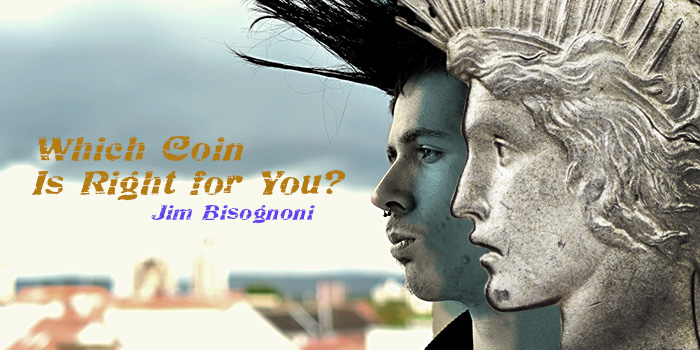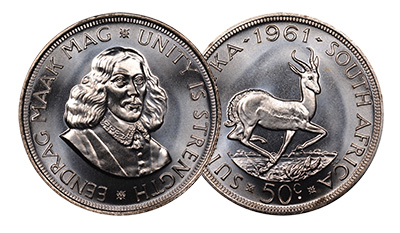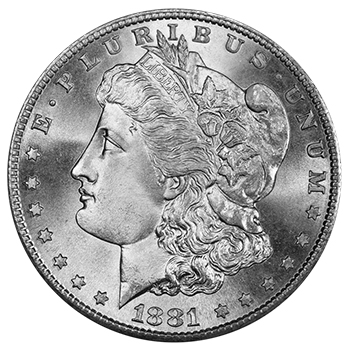
By Jim Bisognani – NGC Contributor ……..
Somehow the last quarter of 2017 is here already. I shouldn’t be surprised, as I have a multitude of fallen leaves already poised for raking around my home. Yet somehow, as I write this, with temperatures approaching 90, it doesn’t quite cut early autumn in New England.
As I mentioned in my last installment, the certified coin arena remains quite heated, as well. The metals markets have delivered some spark, too, and the overall positive momentum is continuing to attract some collectors who had been camping out on the sidelines, waiting for some sort of invitation to enter the playing field.
Yet as I talk to dealers and collectors, there seems to be an increase in activity targeting more than the semi-numismatic sector. As one Midwest market maker advised me: “It is more sustained collector demand.”
This expert advised that there are presently several divisions or tiers of action. However, the most durable is that of the average or mainstream numismatist and hobbyist. These faithful collectors are truly the backbone of our hobby and business. As these folks enter the coin arena, they are drawn in by many reasons: something to collect, a piece of history, a parent or close relative who was a coindexter, or a tangible investment.
Starting a collection
One such numismatic frontiersman, Mark C. from South Carolina, told me he was busy gathering data from auction sales on the NGC Coin Explorer and trying to pick a series to collect that he…
- Likes
- Can afford to complete in high grade
“I don’t want to collect type. I have decided to start with Peace Dollars. It is a relatively short series with several key dates, yet in MS 63 to MS 64, nothing is really scary other than the 1934-S. Besides, I like the large silver coin.”
I agree with Mark: Peace Dollars are one of my favorite US series, too. I like the design, and for such a short series (1921-1935), there are a wealth of really scarcer Philly and branch mint (Denver and San Francisco) deliveries that are still affordable for collectors of modest budgets.
A quick review of the NGC Price Guide reveals that other than the 1934-S (which is priced at $4,450 in MS 63), there are only three coins listed at $500 or more in MS 63. So, a complete MS 63 endeavor would run a bit under $10,000. According to the NGC Price Guide, aside from the key 1934-S, the other 23 coins which make up the set would average just a shade over $262 each in MS 63.
In fact, just as I was finishing up the article today, Mark called me to say that he picked up his first two coins, the inaugural 1921, graded NGC MS 63 (so he can scratch one from the $500-plus list!) and the 1935, graded NGC MS 64!
“Yeah, I wanted to get the first and last coins in the set and work in from there.” Sounds like a plan, Mark! The Palmetto State resident sounded so thrilled to get his first two coins, and is busy gazing at them and undoubtedly appreciating the subtle nuances of grade and eye appeal.
The appeal of the fresh
There are so many first-time collectors out there, each busy learning about numismatics, anxious to make the “right” first-time purchase. Today, there are thousands of worthy options, raw and certified. To me, there is no real right first coin to buy.
I know for me, it was a mere 48 years ago when I ventured in to my first coin show. It was held at a local hotel that had a good-sized ballroom, and each month on the third Sunday, the throng of about 30 dealers and their respective wares showed up.
It was obvious to me back nearly five decades ago that, like clockwork, certain dealers at the local Portsmouth, New Hampshire show would set up with almost exactly the same coins as the previous month, and they would ultimately leave with virtually the same coins. It was those dealers who brought something different, or laid out “special purchases” in their showcase, who attracted buyers and made sales.
Fresh and varied numismatic material, then and now, always sells and fast.
South African enchantment
 Oh yes, for me, my first coin purchase was a 1963 South Africa 50 Cent piece. I really liked the Springbok dominating the reverse of the crown-sized coin. I was young and loved animals on coins. I scanned through a book at the dealer’s table and learned that the same design element was on the British South African 5 Shilling coin beginning in 1948 — and with only a few exceptions, the same Springbok was in place on the 5 Shilling and then the 50 Cent piece from 1961 to 1964.
Oh yes, for me, my first coin purchase was a 1963 South Africa 50 Cent piece. I really liked the Springbok dominating the reverse of the crown-sized coin. I was young and loved animals on coins. I scanned through a book at the dealer’s table and learned that the same design element was on the British South African 5 Shilling coin beginning in 1948 — and with only a few exceptions, the same Springbok was in place on the 5 Shilling and then the 50 Cent piece from 1961 to 1964.
Though not legal to own then, I was told by this dealer that this same Springbok I was enamored with graced the Half- and 1 Pound gold coins beginning in 1952, and in 1967, the fine animal was adopted as a prominent feature on the gold Krugerrand.
Well, the silver coin I bought then for the princely sum of $5 was (and is) nearly a perfect specimen — yes, I still have that silver-dollar-sized coin. It sits on my desk. Soon after my 1969 purchase, I began to collect the 5 Shilling coins of George VI and Elizabeth II, and am still an easy mark when one comes along!
An offer I couldn’t refuse
After a few subsequent visits to the local show, I began scouting out different higher-grade affordable silver coins, as well. It was around this time, in early fall of 1969, the dealer I bought the Springbok from presented a special offer I couldn’t refuse.
My dealer friend had brought in four or five rolls of Morgan Dollars — these “special purchases” were called DPL Morgan Dollars! I had never seen such wondrous, exquisite Morgans!
Common dates in highly uncommon condition! 1879, 1880, 1881 San Francisco coins. I had my pick, and after examining a handful on a black plush, velvet tray, I bought a pair of glorious deep mirrored 1880-S Morgans. These coins seemed to shift from icy white to a pool of black ice. The reflection was so vivid, I recall seeing the face of a curious onlooker gazing behind me!
 For reference, back then, average common BU Morgans were selling for about $3.50, but I felt the $9 I paid for each of the DPLs was well worth it, because of the undeniable quality. I had never seen coins from any series like that. That memory is as fresh and awe-inspiring today as it was so many years ago.
For reference, back then, average common BU Morgans were selling for about $3.50, but I felt the $9 I paid for each of the DPLs was well worth it, because of the undeniable quality. I had never seen coins from any series like that. That memory is as fresh and awe-inspiring today as it was so many years ago.
Today, those silver dollars would (at least by memory) grade MS 66 or 67 DPL, so for the former, a nice MS 66 DPL would fetch $2,000 or more, and an MS 67 DPL could easily command in the $6,000 to $8,000 range. No, I don’t have either of those coins, as I sold them for around $200 each about a decade later as the coin market exploded around the end the 1970s.
So my advice to a new collector is to start your quest at a local show. Ask questions and keep your eyes open for high-quality coins from all US series and world issues such as Commonwealth countries. If you see something special and it is within your budget, don’t let it get away.
Until next time, happy collecting!
* * *
Jim Bisognani is an NGC Price Guide Analyst having previously served for many years as an analyst and writer for another major price guide. He has written extensively on US coin market trends and values.




